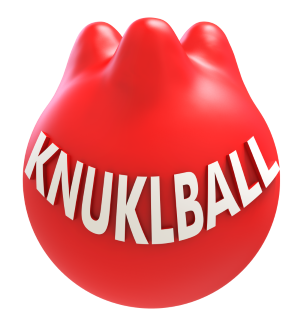
Staying Relaxed During Self-Massage: Choosing the Right Tools
Share
Staying Relaxed During Self-Massage: Choosing the Right Tools
Self-massage is an incredible way to manage tension, relieve sore muscles, and support overall wellness. With the right tools, it can be a powerful practice for managing stress and improving mobility. However, an often-overlooked aspect of self-massage is the importance of staying relaxed during the process. Tensing up while using self-massage tools can reduce the effectiveness of your efforts, and certain tools may inadvertently demand more physical exertion, leaving you frustrated rather than refreshed. In this post, we’ll explore why relaxation is key during self-massage and how choosing the right tool can make all the difference.
The Role of Relaxation in Self-Massage
When you're tense during a massage, your muscles naturally contract and tighten, making it difficult for any technique to penetrate deep enough to release that stored tension. In contrast, when you are relaxed, your muscles soften, allowing for more effective pressure application and tension relief. Stress-induced muscle tension can counteract the benefits of self-massage, leading to increased discomfort and a less rewarding experience overall.
The key to a successful self-massage session is being able to apply steady, controlled pressure without causing unnecessary tension in your body. Of course, this is easier said than done, especially when using certain tools that require significant effort or awkward positioning to maintain enough pressure to be effective.
How Tools Impact Relaxation and Effectiveness
Not all self-massage tools are created equal, and some may inadvertently add more stress to your body by involving too much physical effort. Many tools require you to actively hold them in place or press down with a significant force, which can shift the focus away from relaxation and towards the physical demands of using the tool. This unintended muscle engagement can make the process more fatiguing and less enjoyable, limiting the overall benefits of your self-massage routine.
How to Choose the Right Self-Massage Tools
When selecting a self-massage tool, there are many things to consider. The best tools allow you to focus on the massage rather than the effort it takes to use them. Here are a few things to keep in mind:
- Ease of Use: Choose tools that don't require significant effort to hold, maneuver, or apply pressure. Tools that allow you to apply pressure using multiple surfaces like the floor, wall, or your hand, offer more options for greater leverage, reducing the need for physical exertion.
- Design: Since the human body has unique structures and contours, ergonomic designs can be highly effective in applying targeted pressure to specific areas or muscle groups, requiring less force to have a positive effect.
- Versatility: Tools that offer multiple therapeutic applications—such as trigger point release, deep tissue work, and soft tissue mobilization —allow you to treat various muscle groups without switching between different devices. The more versatile the tool, the easier it is to work with and maintain a state of relaxation throughout the process.
- Minimal Effort, Maximum Benefit: Certain tools, like massage sticks, hooks, and other handheld devices, can cause unnecessary strain by requiring you to engage additional muscle groups during use, leading to fatigue in areas such as your arms, shoulders, or neck. Instead, opt for tools that promote relaxation and allow you to focus on the specific area being treated.
Balancing Pressure and Relaxation
The key to effective self-massage is applying sufficient pressure to relieve tension without straining other areas of the body. Tools like KNUKLBALL are ideal for achieving this balance, as the knuckles penetrate deep into muscle tissue and use multiple points that precisely focus pressure, reducing the need for excessive force. With minimal physical effort, you can focus on deep breathing and staying relaxed while working out stubborn knots, trigger points, and muscle tightness.
Conclusion
Maintaining a relaxed state is crucial when using self-massage tools. The more effortless the process, the more effective the treatment. By choosing tools that work with your body rather than against it—like the versatile and ergonomic KNUKLBALL—you can enhance your self-massage experience, relieve muscle tension more effectively, and maximize the benefits of mobility work. Investing in the right tool is not just about convenience; it's about maximizing the therapeutic impact while minimizing unnecessary strain. So stay relaxed, and let your tools do the work for you.
